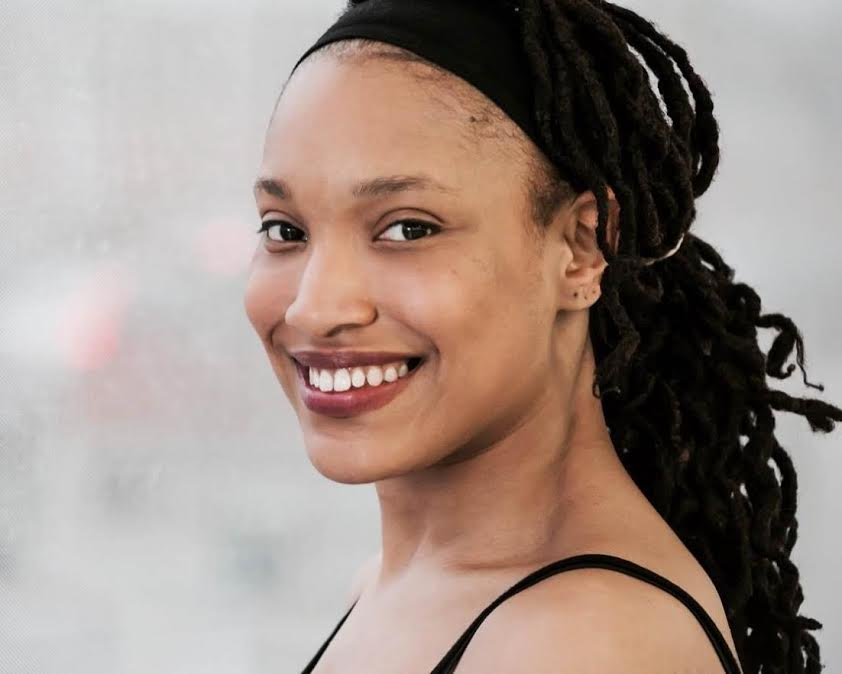Some young dancers dream of their careers first, then turn to pedagogy later on. Not Kia Smith. When she was a little girl, the 31-year-old South Side native dreamed of owning a dance studio, even before she decided to become a professional dancer. Now, she's the founding executive artistic director and resident choreographer of the South Chicago Dance Theatre, a Hyde Park company whose youth training company teaches styles like ballet, contemporary, jazz, and modern dance to young dancers and choreographers.
Joined by South Chicago Dance Theatre company members, Smith will perform part of Dancing Beyond the Borderline, an autobiographical evening-length work, at Chicago Danztheatre Ensemble’s Stories of Chicago show on January 24 and 25 at Ebenezer Lutheran Church in Andersonville. Here, she shares the subtle and not-so-subtle ways her biography informs her art.
Where did you begin your journey to become a professional dancer?
[I danced] in high school at King College Prep High School, but it was a school program, so the training wasn’t that rigorous. I ended up getting a scholarship to attend the Hyde Park School of Dance, and I was there for two years. Dancers usually start when they’re, like, five, but I didn’t start until I was 16.
Going to the Hyde Park School of Dance gave me the opportunity to receive technical training, but really, I would say my background comes not from dancing but from my family and culture. My dad is the founder of Jazz in the Alley, a big event with jazz music on the South Side that took place in the 1960s and 1970s, and jazz has had a huge impact on the way that I make work. I also went to the 63rd Street Beach drum circle all the time as a kid, which is where I learned to move.
On the company’s website, your artistic statement says that you are “ultimately interested in a deconstruction and transcendence of race and community through movement.” Can you explain what you mean by that?
A big part of my mission at South Chicago Dance Theatre is cultural diplomacy. For example, right now, we’re in the middle of a three-year partnership with Joseph Kim, an artist in Seoul — South Chicago Dance Theatre has been to South Korea twice, and his company will be here in Chicago for the second time in May. A lot of the time, before people meet me or even have a chance to look at my website, they assume, “Oh, you’re a black choreographer, you probably do black dance.” But I’m most interested in using dance to build community with many different kinds of people — I’m not so concerned with making black dance because I’m black.
Talk to me about your recent projects and the creative processes behind them.
When I was in Korea in November working with Joseph Kim and his company, we went into the studio with no plan at all and no music. We went to the studio and started moving and teaching choreography — just coming up with movement in that moment, whatever happened, and then building it. That was one process.
When I made my first evening-length work last year, that was actually auto-ethnography. It talks about my family’s history, so I did lots of research about my family, the South Side, and the Great Migration. From there, I made the work.
That’s what your piece at Chicago Danztheatre Ensemble’s upcoming Stories of Chicago show will be about, right?
Yes. We are doing an excerpt of Dancing Beyond the Borderline. It’s a 75-minute show that was shared with two other dance companies.
Dancing Beyond the Borderline is in three sections. The first is the Great Migration; it talks about my great-grandmother and her story. She came to Chicago from Memphis and traveled with a suitcase filled with handwritten prayers. Then, the second section is about Jazz in the Alley and my dad’s contribution to Chicago’s jazz community. The third section is about my own experiences stemming from that, which is what we’re showing at Chicago Danztheatre. My family is small, so to be able to make those connections has been powerful for me.



